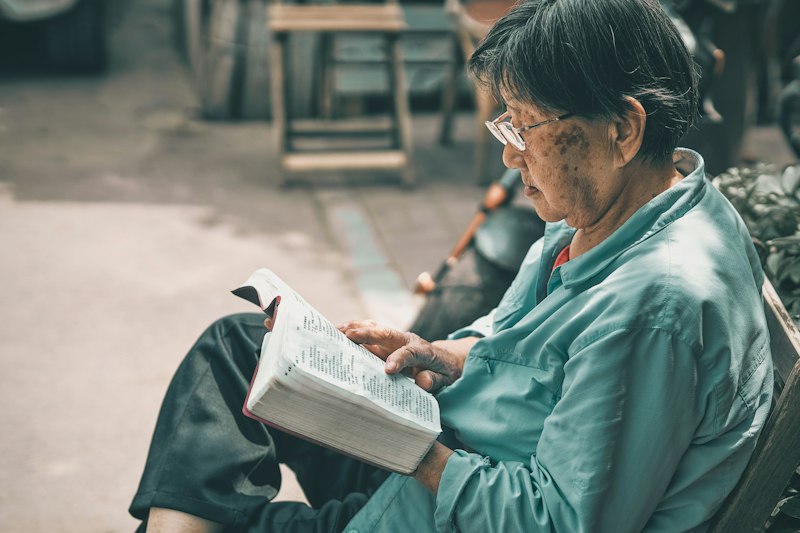Chinese Jade Traditions: Gemstone Symbolism in Art
When it comes to Chinese art and culture, one cannot overlook the significance of jade. This precious gemstone has been deeply ingrained in Chinese traditions for centuries, representing a rich tapestry of symbolism and artistic expression. From ancient times to the present day, jade holds a special place in the hearts of the Chinese people.
Jade is more than just a beautiful stone; it carries profound meaning and symbolism in Chinese culture. Known as the “Stone of Heaven,” jade is believed to possess spiritual qualities and bring good fortune, prosperity, and longevity. It is often associated with virtues such as wisdom, purity, and harmony. In Chinese mythology, jade is also considered to be the essence of the cosmos, embodying the yin and yang energies.

The color of jade also holds significance in Chinese tradition. Green jade, in particular, is highly valued and is believed to have a soothing and healing effect on the body and mind. It represents fertility, growth, and renewal, making it a popular choice for decorative objects associated with new beginnings and prosperity.
Throughout history, jade has played a central role in Chinese rituals and ceremonies. Emperors and nobles adorned themselves with jade ornaments as a symbol of their status and authority. It was also used in burial rituals to accompany the deceased into the afterlife, reflecting the belief in the everlasting nature of jade’s spirit.
In modern times, the allure of jade continues to captivate art enthusiasts and collectors worldwide. Its timeless beauty and cultural significance make it a prized possession for many. Whether in museums or private collections, jade artifacts stand as testaments to the rich heritage of Chinese art.
Chinese jade traditions go beyond mere aesthetics; they are embedded in deep-rooted symbolisms and beliefs. The artistry and symbolism associated with jade have made it an integral part of Chinese culture, influencing everything from sculptures to jewelry. By understanding the intricate meanings behind these masterpieces, one can truly appreciate the marvels of Chinese jade and its enduring legacy.
Unearthing the Secrets: Exploring the Rich Symbolism of Chinese Jade in Art
Have you ever wondered about the hidden messages and profound symbolism behind Chinese jade art? Prepare to be captivated as we delve into the secrets and beauty of this ancient artistic tradition. Chinese jade holds a significant place in the country’s history, representing more than just a precious stone. It is a symbol of power, spirituality, and good fortune.
In Chinese culture, jade has long been revered for its exquisite qualities and deep cultural meaning. Its vibrant green hues evoke feelings of life, growth, and harmony. The use of jade in art dates back thousands of years, with artifacts showcasing intricate carvings that depict various mythological figures and creatures.
One of the most prominent symbols associated with Chinese jade is the dragon. Known as the ultimate symbol of power and imperial authority, the dragon is often depicted on jade pieces, showcasing its fierce yet majestic presence. These dragon carvings not only exhibit exceptional craftsmanship but also embody the aspirations and dreams of the Chinese people.
Another popular symbol found in Chinese jade art is the phoenix. Representing beauty, grace, and rebirth, the phoenix is often seen alongside the dragon, symbolizing the harmonious balance between yin and yang forces. The delicate carvings of the phoenix on jade pieces are a testament to the skill and dedication of the artisans who have mastered this ancient craft.
The lotus flower is yet another powerful symbol associated with Chinese jade art. Just like the lotus blooms from murky waters, it represents purity, enlightenment, and spiritual awakening. This symbolism is intricately woven into jade carvings, creating stunning pieces that reflect the profound connection between nature and human existence.
The symbolism of Chinese jade goes beyond individual figures and motifs. It encapsulates the rich tapestry of Chinese culture, history, and beliefs. Each jade artwork tells a unique story, carrying with it the hopes, dreams, and aspirations of the people who created it.
Chinese jade art is a treasure trove of symbolism and cultural significance. From the majestic dragon to the graceful phoenix and the serene lotus flower, these ancient carvings offer a glimpse into the rich history and spirituality of China. The intricate craftsmanship and profound meaning behind each piece make Chinese jade art truly awe-inspiring and deserving of admiration for generations to come.
From Emperors to Modern Artists: Chinese Jade’s Enduring Significance in Artistic Expression
Chinese jade has captivated artists and enthusiasts for centuries, transcending time and cultures to become an enduring symbol of artistic expression. From emperors of ancient dynasties to modern-day artists, the significance of Chinese jade in the art world remains unparalleled. Its rich history, exquisite craftsmanship, and symbolic meaning have cemented its place as a treasured medium.
With roots dating back more than 5,000 years, Chinese jade holds a storied past. Emperors of various dynasties revered jade for its perceived mystical properties and considered it a symbol of power, immortality, and wisdom. Intricately carved jade artifacts adorned imperial courts, serving as emblems of authority and prestige. This association with royalty elevated jade to a highly esteemed artistic medium.
Today, contemporary artists continue to explore the versatility of Chinese jade, pushing traditional boundaries while embracing its historical significance. Through innovative techniques and imaginative designs, they infuse new life into this ancient material. From sculptures that embody grace and fluidity to intricately carved jewelry pieces, each creation tells a unique story.
The allure of Chinese jade lies not only in its aesthetic appeal but also in its symbolism. In Chinese culture, jade represents virtues such as purity, harmony, and longevity. It is believed to possess healing properties and bring good fortune to those who possess it. Artists harness these symbolic meanings to convey profound emotions and messages through their artwork, connecting with viewers on a deeper level.
Just as a sculptor skillfully shapes clay into a masterpiece, artists carve, polish, and shape jade to reveal its inherent beauty. They work with precision and patience, coaxing out intricate patterns and textures that mesmerize the eye. Each stroke of the chisel and delicate touch of the artisan’s hand brings forth the essence of the jade, transforming it into a work of art that resonates with audiences.
Chinese jade’s enduring significance in artistic expression is a testament to its timeless allure. From ancient emperors to modern-day artists, this precious stone continues to inspire and captivate. Its rich history, intricate craftsmanship, and symbolic meaning make it a medium like no other. As artists breathe life into each piece, they honor the past while forging a path towards the future, ensuring that Chinese jade remains an integral part of artistic legacy for generations to come.
The Prized Gemstone: Chinese Jade’s Long-standing Tradition as a Symbol of Power and Prestige

For centuries, Chinese Jade has adorned the clothing and accessories of emperors, nobles, and high-ranking officials. Its lustrous green hues symbolize virtue, grace, and immortality. The belief in the stone’s mystical properties has made it an object of desire and intrigue. But what makes Chinese Jade so exceptional?
Firstly, its rarity and durability set it apart. Chinese Jade comes in various shades, from pale green to deep emerald, and is renowned for its toughness. Its ability to withstand time and preserve its beauty has earned it the title of “Stone of Heaven.” Its scarcity adds to its allure, making it highly sought after and treasured.
Moreover, Chinese Jade’s significance extends beyond its aesthetic appeal. It is considered a talisman of good luck and protection. The Chinese believe that wearing or carrying Jade brings harmony, prosperity, and spiritual balance into one’s life. It is also believed to ward off negative energy and promote longevity. These beliefs have led to the stone being passed down through generations as a family heirloom, a testament to its enduring value.

Today, Chinese Jade continues to captivate collectors, enthusiasts, and those seeking a connection to the past. Its timeless beauty and rich cultural significance make it a cherished gemstone worldwide. Whether worn as a pendant, displayed in a museum, or admired in the hands of a master carver, Chinese Jade remains an enduring symbol of power, prestige, and the indomitable spirit of China.
Beyond Beauty: The Spiritual and Cultural Meanings Embedded in Chinese Jade Artworks
Have you ever marveled at the exquisite beauty of Chinese jade artworks? These captivating pieces go beyond their aesthetic appeal, holding deep spiritual and cultural significance. Each jade artwork tells a story, carries symbolism, and reflects the rich heritage of China.
Jade has been revered in Chinese culture for thousands of years. It is believed to possess mystical properties and is often associated with immortality and spiritual enlightenment. In ancient times, jade was considered the “imperial gem” and was exclusively reserved for royalty and the elite. Today, it continues to be highly valued and cherished by collectors and enthusiasts worldwide.
Chinese jade artworks encompass a wide array of forms, including sculptures, carvings, jewelry, and decorative objects. Each piece is meticulously crafted, showcasing the masterful skills of Chinese artisans. The intricate details and delicate craftsmanship evoke a sense of awe and admiration.
Symbolism plays a significant role in Chinese jade art. Various motifs are often depicted, each carrying its own meaning. For example, the dragon symbolizes power, strength, and good fortune, while the phoenix represents beauty, grace, and auspiciousness. These symbols reflect the Chinese belief in harmony and balance between nature and humanity.
Furthermore, jade is associated with spiritual and healing properties in Chinese culture. It is believed to promote wisdom, compassion, and inner peace. Many people wear jade jewelry as a protective talisman or as a means to connect with their spiritual selves. It is also used in traditional Chinese medicine for its supposed healing benefits.
Chinese jade artworks not only embody spiritual significance but also serve as a testament to the country’s rich cultural heritage. They often depict scenes from mythology, historical events, or daily life, providing a glimpse into the traditions and customs of ancient China. These artworks offer a unique way to explore and appreciate the historical and cultural aspects of this vast civilization.
Chinese jade artworks go beyond their visual allure. They carry deep spiritual meaning, symbolize cultural values, and provide a connection to China’s ancient past. Whether you are captivated by the intricate carvings or drawn to the symbolism, these treasures offer a window into a world of beauty, spirituality, and cultural significance. Explore the realm of Chinese jade art, and immerse yourself in its profound and enchanting stories.


